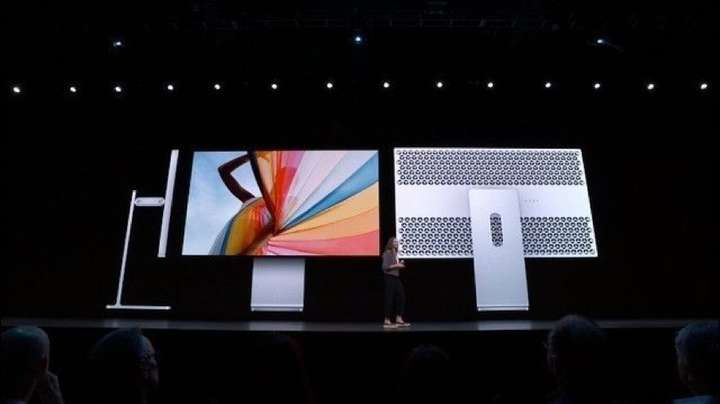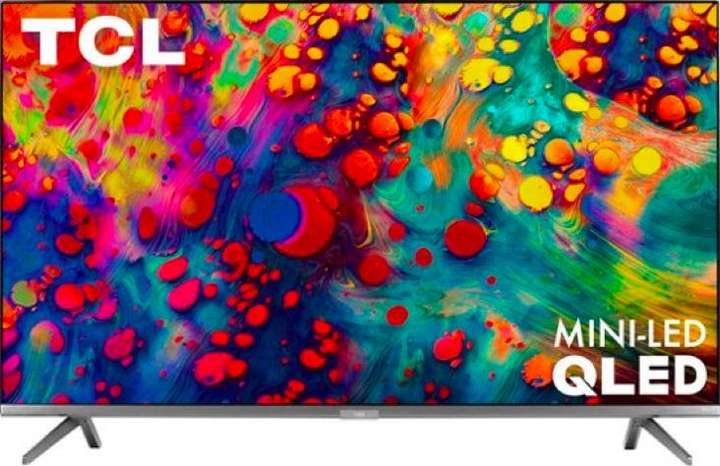It’s appointed: High-quality picture. OLEDs do not meet the picture quality requirements of high-end products.
From traditional LED displays to OLEDs, display panel manufacturers first wanted to solve the problem of “Contrast,” which they wanted to “Make the black darker.”.
The principle of LED display is a whole piece of backlight, lighting the different polarization states of the liquid crystal pixels, and then display the content. This results in “A small amount of light leaking out when the pixels are black,” and the contrast is not high enough to make the black pixels look a bit gray. So traditional monitors, with their own particular emphasis on contrast.
OLED is designed to solve the contrast problem. Each pixel of an OLED is made up of a set of LEDs that emit light independently. The black pixels are completely extinguished, without any light. Theoretically, the contrast is infinite.
Of course, OLEDs have many advantages, such as simpler structure, smaller thickness, and flexibility… OLED’s maturity has led to today’s full screen, perforated screen, and folding screen. But OLEDs also have one of the biggest disadvantages, which is the “Pixel lifetime”.
Like LEDs, OLEDs require subpixels of three different colors to emit light of different intensities and blend the colors together. But controlling the smaller individual pixels on an OLED screen requires a greater current, which can age easily after a long period of use, resulting in screen burn-out. The brighter the screen, the more likely it is that the colors won’t fade.

It’s the same reason that the main control chip, controls the OLED screen with such precision. So the color accuracy of an OLED screen is also a problem. Apple didn’t use OLED screens until the iPhone X, partly because of the high cost of OLED screens, and partly because Apple didn’t have enough confidence in the color performance of OLED screens. That the main control chip controls the OLED screen with such precision. So the color accuracy of an OLED screen is also a problem. Apple didn’t use OLED screens until the iPhone X, partly because of the high cost of OLED screens, and partly because Apple didn’t have enough confidence in the color performance of OLED screens.
The Mini-LED is to combine the advantages of LED and OLED, not only to achieve the contrast of OLED level but also to achieve the color quasi-brightness of LED.
The disadvantage of LED is a whole piece of backlight, when showing black light will also leak out, right? Why don’t we just use the backlight as an area divider? The bright areas of the image, turn on Backlight, the dark areas, and just turn off the backlight.
It’s easy to say, but it’s not so easy to make it happen. On the one hand, to put hundreds to tens of thousands of lights in a screen, but also the brightness, color temperature are uniform lights, this cost is very expensive. Whether it is the number of beads or quality, are piled out of money.
So the Mini-LED technology is generally used for professional reference level monitor screens, and relatively high-end TV, display products.

Apple’s Pro Display XDR, for example, has a small number of 576 beads, but they are of the highest quality. After all, if the LED quality is not good when the whole screen shows the content, it will be because of uneven backlight, brightness, color deviation. Backlighting is a big part of the $40,000 price tag for the Pro Display XDR.
In recent years, there have been persistent reports that Apple is exploring the possibility of making a Mini-LED iMac and MacBook, apparently after making an extremely high-end product, and hopes to use this experience to optimize and upgrade its entire MAC product line. This is not surprising.
In Apple’s product layout, OLEDs are mainly used in small-screen mobile devices such as mobile phones and smartwatches, while on large-screen devices such as Macs and monitors, mini-LEDs are likely to dominate the future.
LG and Samsung were the first companies in the world to develop OLED technology, and currently, the majority of high-end OLED capacity is in their hands. So Chinese manufacturers, such as Tcl, the earliest manufacturer in the field, are beginning to see the Mini-LED as an opportunity to “Overtake on a curve.”. Both R & D and mass-production are earlier, with the first Mini-LED TV on display in 2018 and the first consumer-grade Mini-LED TV in 2019. Tcl accounts for 90% of the total Mini-LED TV market.
As mentioned above, the technology of the Mini-LED itself is not complicated. Better quality, more uniform light beads, more partitions, combined with the LED panel era of technology accumulation, you can do a better color, longer life of the high-end screen. This very test manufacturers of long-term accumulation is a long-term thing. Only do enough, in order to do a good job of quality and stability.

At this point, Tcl and Apple’s thinking is very similar. Start with the top-of-the-line product, Top-of-the-line technology. It does 2048 on the flagship X12, with a maximum brightness of 2,000 NIT. After establishing a benchmark, the technology is then filtered into consumer-grade, relatively mid-range products. Like the amount of C-12 on board.
When Pro Display XDR was first released, I went to the Apple Store and it was really impressive. I was in the market for one. But on the one hand, my wallet didn’t allow me to do that, and on the other hand, I wanted to wait and see if Apple would bring this technology down to a more mundane product.
There is hope, it seems, that the Mini-LED could be the future.